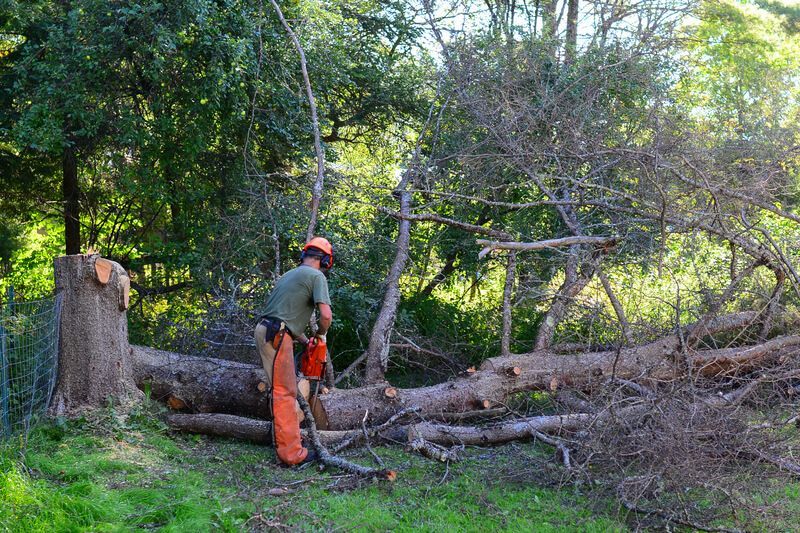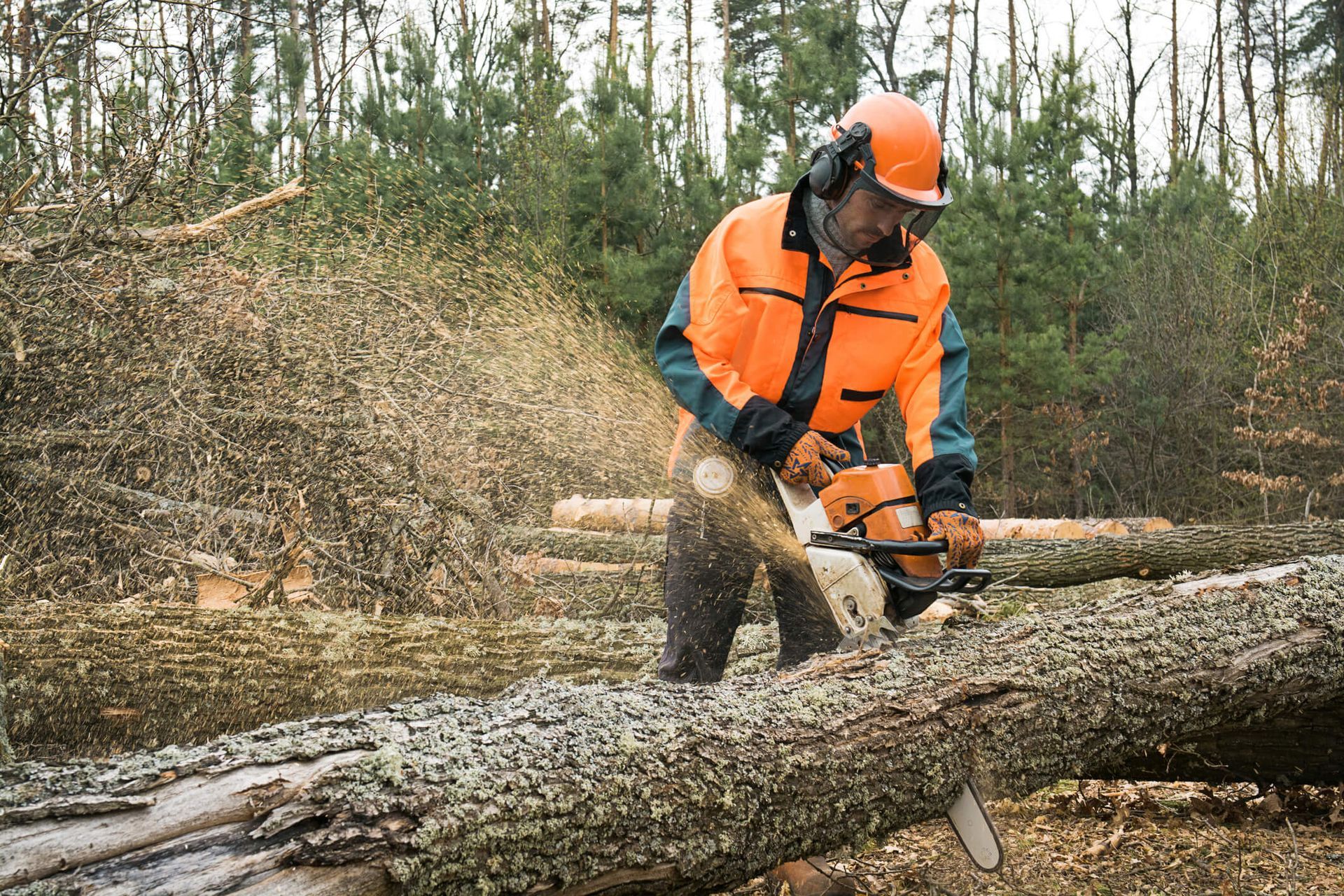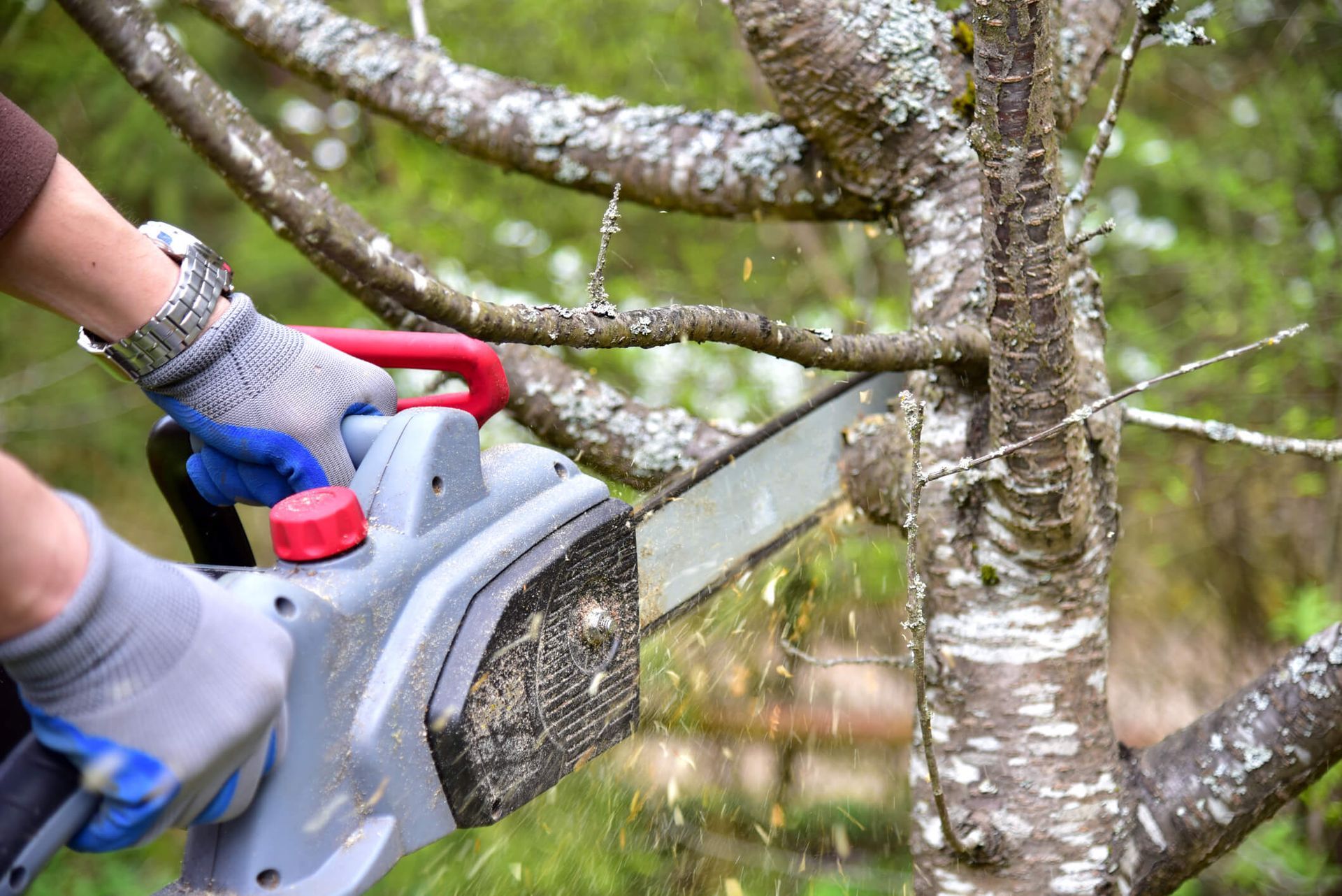Safe Tree Removal Requires Planning, the Right Tools, and Proven Methods
Removing a tree may seem like a straightforward task, but it is one of the most dangerous jobs in landscaping and property maintenance. Every year, accidents occur when people underestimate the risks of working at height, handling power tools, or controlling the fall of heavy branches. Safe tree removal is not just about cutting—it’s about carefully planning the process, selecting the correct tools and equipment, and applying proven techniques to protect people, property, and the surrounding environment. Whether performed by trained homeowners or professional arborists, each step must be executed with precision, safety, and efficiency in mind.
The Importance of Safe Tree Removal
Tree removal is a critical task for homeowners, arborists, and landscaping professionals. Whether addressing a diseased oak, a storm-damaged pine, or an overgrown yard hazard, the process demands skill, preparation, and attention to detail. An experienced arborist must carefully climb using a ladder or ropes, always wearing a helmet to protect against falling debris. Proper clearance around the work area is essential to ensure safety for both the workers and bystanders. Following a strict procedure that emphasizes care and meets the specific needs of each tree removal situation helps prevent accidents and damage.
Removing a tree without proper methods can cause severe injury, property damage, and even fatalities. Every year, accidents occur when people underestimate the dangers of working with chainsaws, climbing ladders, or cutting large branches over unstable ground. Safe removal is about more than just cutting—it is about hazard assessment, protective measures, and careful execution. By respecting the care needed throughout every step of the procedure, arborists can maintain safety and successfully meet the needs of their clients and the environment.
Planning the Tree Removal Process
The safest removals begin long before the first cut. Proper planning involves surveying the yard and identifying potential hazards such as buildings, power lines, fences, and landscaping features. Several factors affect the success of any tree service, including the soil condition, slope of the ground, and stability of the tree’s trunk and limbs. The direction of the fall must be determined in advance, and clear escape routes should be established for everyone on site.
To ensure safety and efficiency in tree work, consider these basics as a priority for the user, whether a homeowner or professional:
- Assess the site thoroughly to identify obstacles and potential risks.
- Select appropriate products and tools tailored for tree cutting and tree trimming.
- Understand the way the tree will fall and prepare escape routes for every person involved.
- Always prioritize safety and clear communication throughout the entire field operation.
This preparation phase is essential to avoid last-minute improvisation, which often leads to mistakes.
Choosing the Right Tools and Equipment
Selecting the correct tools is essential for safe and efficient removal. Chainsaws, both gas and electric, are indispensable for cutting through large trunks and branches. Hand saws are better suited for precision cuts and smaller limbs, especially in tight spaces. Ladders, pole saws, pruning shears, and loppers provide reach without dangerous climbing. Wedges and pulleys help control fall direction, while ropes and harnesses provide stability when working at height. Using a wedge correctly can make all the difference in challenging situations, giving someone control over the tree’s fall and protecting life and property.
Professional-grade safety equipment—including boots, helmets that protect the head, gloves, and eye and hearing protection—is non-negotiable for preventing serious injuries. There is every reason to never compromise on safety equipment because in this line of work, challenges come in many forms. Everything must be in place before starting, from sharp tools to secure harnesses, because the slightest mistake in the wrong place can turn a routine limb cut into a dangerous event. Safety is the foundation that protects everyone involved.
Wearing the Correct Protective Gear
Personal protective equipment (PPE) is the first defense against injury. Helmets protect against falling branches, while eye protection shields against wood chips and flying debris. Hearing protection guards against the constant noise of chainsaws, and gloves improve grip while preventing blisters and cuts. Leg protection, such as chainsaw chaps, reduces the risk of severe injury from accidental contact with a moving chain. Steel-toe boots provide a stable footing and guard against dropped tools or heavy wood sections. A climbing harness is essential for anyone ascending the tree, ensuring stability and fall protection.
Understanding different types of cutting techniques is just as important as having the correct PPE. Each type of tree and situation demands a specific technique to ensure safety and efficiency. Whether working on a large section of trunk or a smaller limb, the content of the cut and the method used can significantly impact preventing accidents and ensuring clean, controlled results.
Preparing the Work Area for Safety
Before beginning any cutting, the work area must be cleared and secured to maintain complete control over the procedure. Bystanders, pets, and unnecessary tools should be kept far from the drop zone to prevent injuries and protect property. Loose debris, brush, and stray branches on the ground can cause tripping or interfere with safe movement, so ensuring proper clearance is essential. When working in residential areas, cones, tape, or signage should be used to warn others and improve overall efficiency. Additionally, wearing eye protection and following local regulations, such as obtaining permits or professional oversight near streets or sidewalks, helps guarantee a safe and compliant removal process.
Operating Chainsaws and Power Tools Correctly
Chainsaws are powerful and potentially dangerous if mishandled, making protection and proper planning essential for any tree service. Operators must regularly check chain tension and ensure adequate lubrication to maintain safe and efficient operation. Keeping both hands firmly on the saw and making cuts at waist height or lower helps reduce fatigue and improve control. Understanding the content of each cut and the force applied can prevent accidents, especially when working near areas with soil instability or tree decay, which can increase risks.
Operators must also stay out of the saw’s kickback zone—the upper quadrant of the guide bar tip—where sudden upward motion can occur, posing danger. Power tools such as pole saws and stump grinders require similar attention, handled according to manufacturer instructions and with regular inspections for wear or defects. Additionally, proper hearing protection is vital for the user to prevent long-term damage during extended periods of operation.
Controlling Tree Fall with Precision
One of the most essential skills in tree removal is controlling the direction of the fall. The process begins with a notch cut on the side facing the desired fall direction, followed by a back cut slightly higher on the opposite side. Leaving an uncut hinge of wood helps guide the fall safely. Wedges prevent the tree from settling back and pinching the saw, while ropes and pulleys can be used to apply directional force. Wind speed, wind direction, and the tree’s natural lean all play roles in determining the safest approach.
Removing Limbs and Sections Safely
In many situations—especially when working near buildings or other obstacles—tree removal must be carefully planned and executed using the right tools and safety measures. Trees are often dismantled in sections, starting at the top and working downward, removing smaller branches before making larger cuts on limbs and trunk sections. Ropes and pulleys are frequently used to lower pieces of wood to the ground in a controlled manner, minimizing accidents and damage to the surrounding area. Although sectional removal is more time-consuming than felling a tree in one motion, it better meets the needs of the site and ensures precise control in tight spaces.
Proper maintenance of equipment and strict adherence to safe operation procedures are essential for successful and safe removals. For residents of Charlestown, IN, professional services such as Tree Removal in Charlestown, IN provide the expertise, tools, and experience needed to handle complex removals while prioritizing safety and property protection.
Completing Stump Removal and Site Cleanup
Once the tree is down, the remaining stump can be addressed with care and thorough assessment of the hazards involved. Stump Grinding and Removal Services in Charlestown, IN use specialized equipment to remove stumps with precision, reducing them below ground level efficiently. For manual removal, digging around the base, cutting roots with a saw, and using ropes for control during extraction are essential steps. Chemical treatments can also be applied to speed up natural decay, though this method requires more time and patience.
After stump removal, all debris—including branches, wood sections, and sawdust—should be cleared from the yard to maintain a safe environment. Proper cleanup is a crucial part of the job, helping to prevent pests and hazards while preparing the site for future use. Taking these steps ensures that every project is completed with the highest level of safety and professionalism.

Recognizing and Avoiding Common Hazards
Tree removal presents several dangers. Chainsaw kickback, falling limbs, tool malfunctions, and contact with live electrical lines are among the most common risks. Environmental hazards such as uneven terrain, unstable soil, or strong winds can also create dangerous conditions. Preventing these hazards starts with proper training, correct lifting techniques, and using mechanical aids whenever possible.
Key points to consider include:
- Always use a wedge to control the direction of a tree’s fall, reducing unexpected movements and enhancing safety.
- Understand the content and condition of the tree, including signs of decay or poor health, which can affect stability.
- Be aware that working at height increases risk, so proper safety gear and procedures are essential to protect life.
- Clearing surrounding brush and debris creates better visibility and reduces tripping hazards.
- There is a lot of physical labor involved in tree removal, so proper care and technique are necessary to prevent injury.
- Every reason to prioritize safety must be taken seriously to avoid accidents and ensure successful removal.
When to Hire Professional Tree Services
While smaller trees and shrubs may be safe for homeowners to handle, large trees, damaged trunks, or removal near power lines require professional intervention. SYS Enterprises employs certified arborists who bring specialized training, experience, and advanced equipment to handle complex jobs safely. They are also insured, protecting homeowners from liability in case of accidents or property damage. In many cases, hiring a professional service like SYS Enterprises saves both time and money in the long run, while ensuring the highest safety standards.
Maintaining Tools and Safety Gear
Well-maintained tools are essential for both safety and efficiency. Chainsaws should be sharpened frequently, appropriately lubricated, and stored securely. Ropes and harnesses must be inspected before each use, and any fraying or wear requires immediate replacement. Safety gear like helmets, goggles, and chaps should be cleaned and stored in dry conditions to extend their lifespan. Investing in maintenance not only protects workers but also ensures consistent job performance.
Protecting the Environment During Tree Removal
Tree removal can have lasting environmental effects. Many trees provide shade, erosion control, and habitats for wildlife. When possible, removals should avoid disrupting nesting seasons and minimize soil disturbance. Leaving specific root systems intact can help stabilize the ground, especially on slopes. Local regulations may restrict the removal of particular tree species or require replacement plantings. Being aware of these considerations helps protect both the environment and the property’s long-term health.
Improving Efficiency and Managing Costs
Efficiency in tree removal depends on preparation, teamwork, and the right equipment. Organizing tools and planning the sequence of cuts saves time and reduces unnecessary movements. Debris removal should be incorporated into the workflow rather than left until the end. Cost management comes from matching the job requirements with the appropriate resources—avoiding overuse of expensive equipment for small tasks or attempting dangerous work without the right tools. A well-executed plan minimizes wasted effort and prevents costly mistakes.
Final Guidelines for Safe and Effective Tree Removal
Safe tree removal is a balance of knowledge, skill, and preparation. From risk assessment to stump grinding, each stage requires the right tools, protective gear, and proven techniques. Homeowners and professionals alike must prioritize safety above speed, use proper procedures for cutting and lowering sections, and remain aware of environmental and legal considerations. With the right approach, tree removal can be completed efficiently, protecting people, property, and the surrounding environment.
Frequently Asked Questions
What permits or approvals are needed before removing a tree?
Many municipalities require permits for tree removal, especially near streets or protected species. Knowing local regulations helps ensure compliance and avoid fines.
How do I know if a tree is dead or hazardous enough to require removal?
Signs include large dead branches, fungus growth, significant trunk damage, or leaning that threatens nearby structures.
What are the environmental impacts of tree removal, and how can they be minimized?
Removing trees affects habitat, soil stability, and local climate. Minimizing impact includes avoiding nesting seasons, protecting root zones, and replanting.
How long does a typical tree removal job take?
Job length depends on tree size, location, removal method (sectional vs. felling), and cleanup requirements. Complex jobs can take several hours or days.
What should homeowners do to prepare their property before a professional tree removal?
Clear the area of vehicles, furniture, and pets. Inform neighbors if the job impacts shared spaces, and secure children and pets indoors.
What are the most common injuries during tree removal, and how are they prevented?
Injuries often include cuts, falls, and crush injuries from falling limbs. Prevention relies on PPE, proper tools, training, and adherence to procedures.
Can tree removal damage my lawn or landscaping, and how can the damage be minimized?
Heavy equipment and falling debris can harm lawns and plants. Using mats, careful planning of access routes, and cleanup help reduce damage.
Is it possible to remove a tree during certain seasons, or is timing important?
Season affects soil condition, tree health, and wildlife. Late fall or winter removals are often preferred for easier access and less wildlife disruption.
What happens to the wood and debris after tree removal?
Wood can be mulched, chipped, salvaged for firewood, or hauled away. Proper debris removal maintains yard safety and aesthetics.
How often should equipment like chainsaws and safety gear be inspected or replaced?
Chainsaws need frequent sharpening and maintenance after every few hours of use. Safety gear should be inspected before each job and replaced if damaged.


